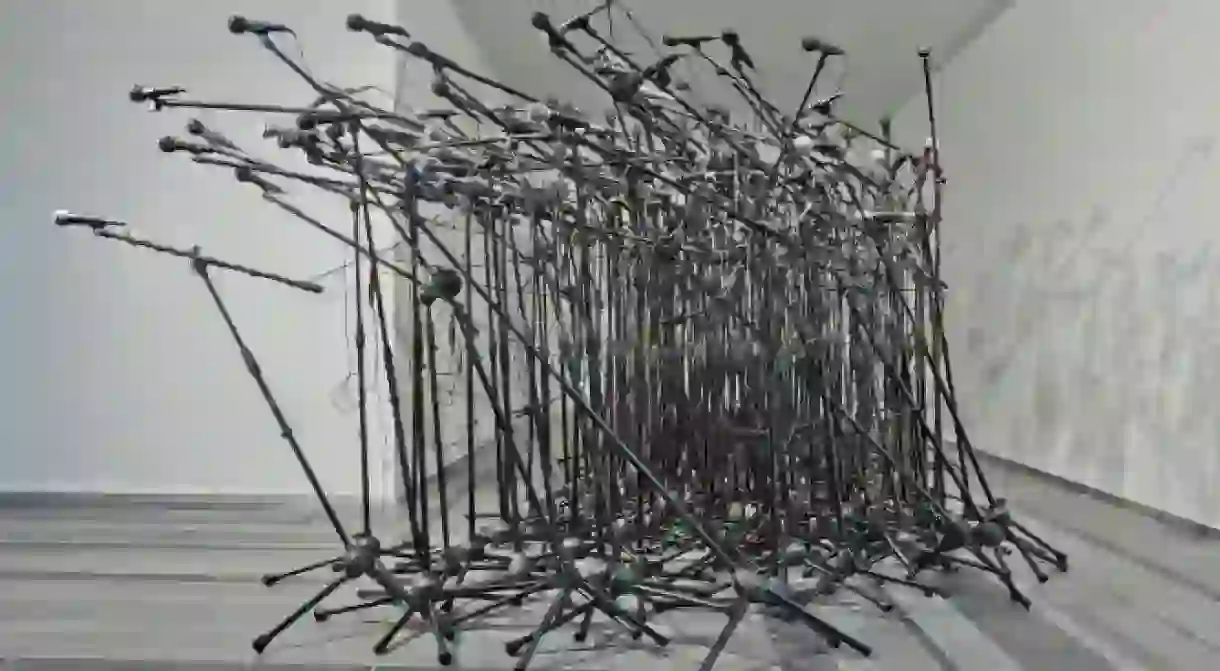The Bell Tolls For Poland At The Venice Biennale

Inspired by Alexei Yurchak’s book about the last Soviet generation, Polish artist Konrad Smoleński is taking over the Polish Pavilion with Everything Was Forever, Until It Was No More – a monumental video and audio construction where a traditional composition for bells meets reverb and sound delay.

If, in 2012, Katarzyna Krakowiak’s sound sculpture for the Venice Architecture Biennale made the walls of the Polish Pavilion quake (Making The Walls Quake As If They Were Dilating With The Secret Knowledge Of Great Powers), the 2013 delegate artist plans to do the same. With an equally ambitious, but slightly shorter title, Konrad Smoleński’s work Everything Was Forever, Until It Was No More is a monumental sound installation, that combines old-fashioned bronze bells with full range speakers, and the traditional concept of symphony with the artist’s fierce punk rock present.

Visual artist, photographer, performer and all-around punk rocker, Smoleński has been creating mixed media works that, one way or another, express his interest in sound for over a decade. Everything Was Forever, Until It Was No More (taken from the Alexei Yurchak’s book of – nearly – the same name Everything Was Forever, Until It Was No More. The Last Soviet Generation) picks it up from there. Comprised of two 400-kilo bronze bells, two walls of speakers and other sonorous objects used to delay and reverberate the sound, this sonic system significantly metamorphoses Smoleński’s symphony, evoking concepts like sound illusion, or the inaccuracy and atrophy of time. His ultimate goal is to create an all-encompassing sonic wave, a tension and dynamics that the visitor will find impossible to escape emotionally, becoming part of the process. An accompanying publication features texts by Craig Dworkin, Alexandra Hui, Andrey Smirnov, as well as curators Daniel Muzyczuk and Agnieszka Pindera, who have, themselves, in the past been involved in projects concerned with science and sound. A handful of supplementary interviews, from the philosopher Simon Critchley to the Polish pioneer of electroacoustic music Eugeniusz Rudnik, complete the set.

Punk rock fury and minimalist elegance, anarchist ideology and artistic craftsmanship, tricky pyrotechnics and technical precision all meet in Smoleński’s work. Member of the Penerstwo art collective in Poznan, and part of several music groups, like Mama and BNNT, he alternates ‘Sound Booming’ with hypnotic movie stills. Gymnastic balls-turned-bombs, or military missiles-turned-music-instruments are only a couple of his unconventional creative tactics, declaring his love of ready-mades – and, often, his need to burn them. All, in the process of facing his inner distress about eternal questions – fear, death and the end.
Everything Was Forever, Until It Was No More, exhibition video teaser.
Poland team
Theme: Everything Was Forever, Until It Was No More.
Artist: Konrad Smolenski.
Commissioner: Hanna Wróblewska.
Curators: Agnieszka Pindera, Daniel Muzyczuk.
Venue: Pavilion at Giardini.
About The Culture Trip’s Venice Biennale Project
The 55th International Art Exhibition of the Venice Biennale will take place from 1 June – 24 November. The Culture Trip’s Venice Biennale Series is an article series leading up to the start of the exhibition. With 88 countries participating in this year’s Biennale — 10 of them for the first time — and 150 artists from 37 countries, our coverage over the next couple of months will highlight a selection of the National Pavilions that will be participating in the 2013 edition of the Venice Biennale. Watch this space for our daily Venice Biennale updates or follow us on Twitter, Facebook and Pinterest!
By Danai Molocha













